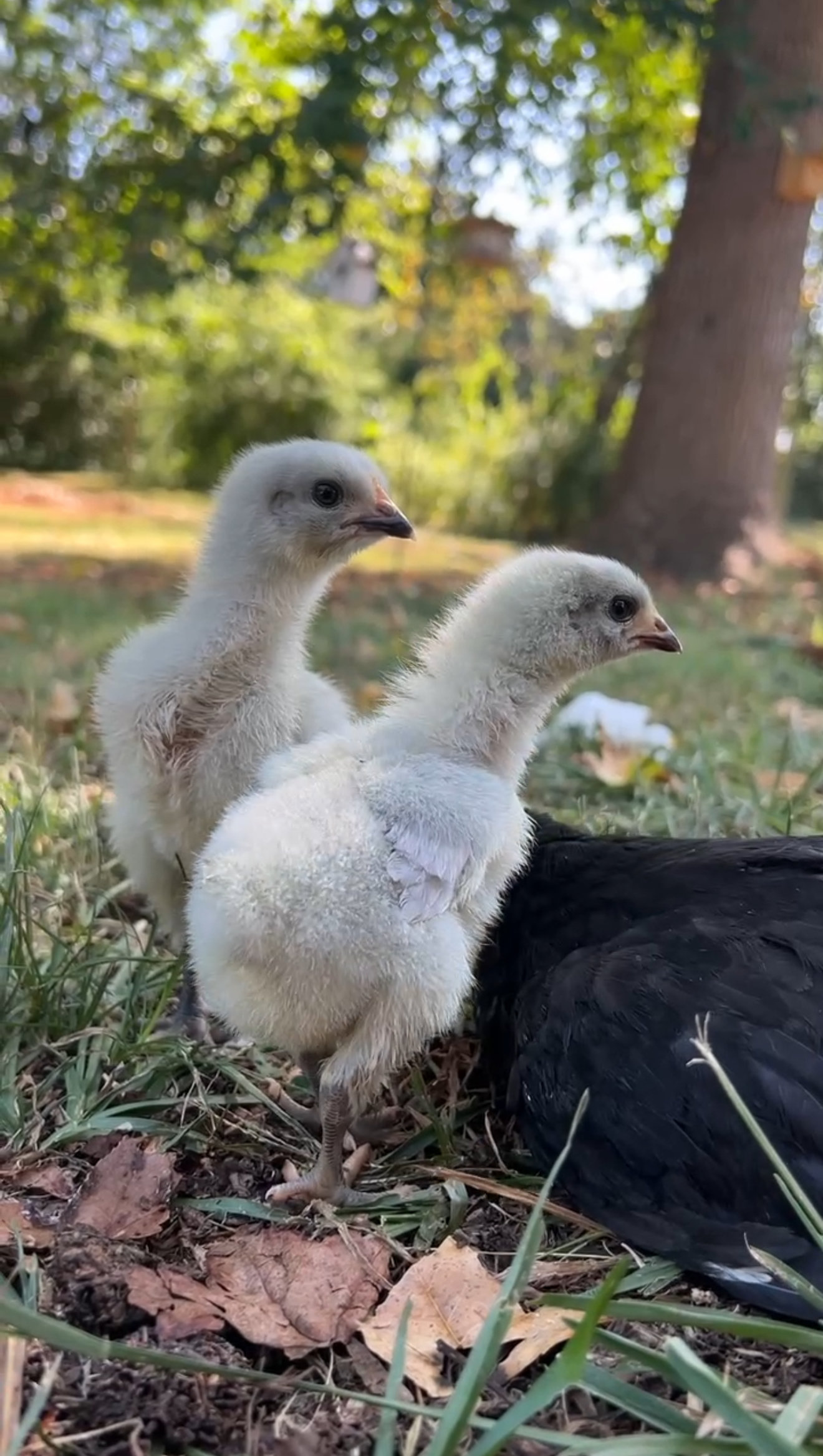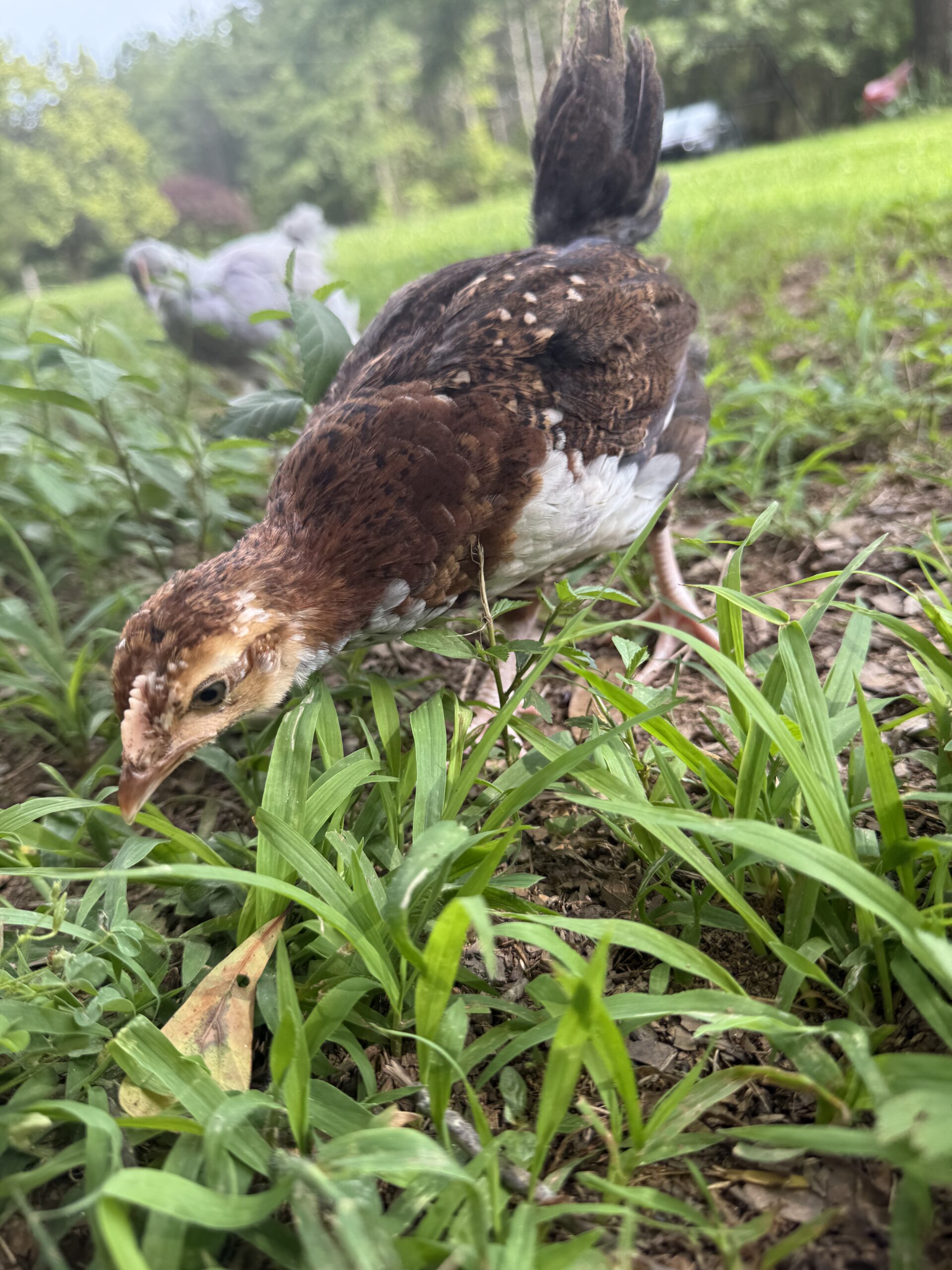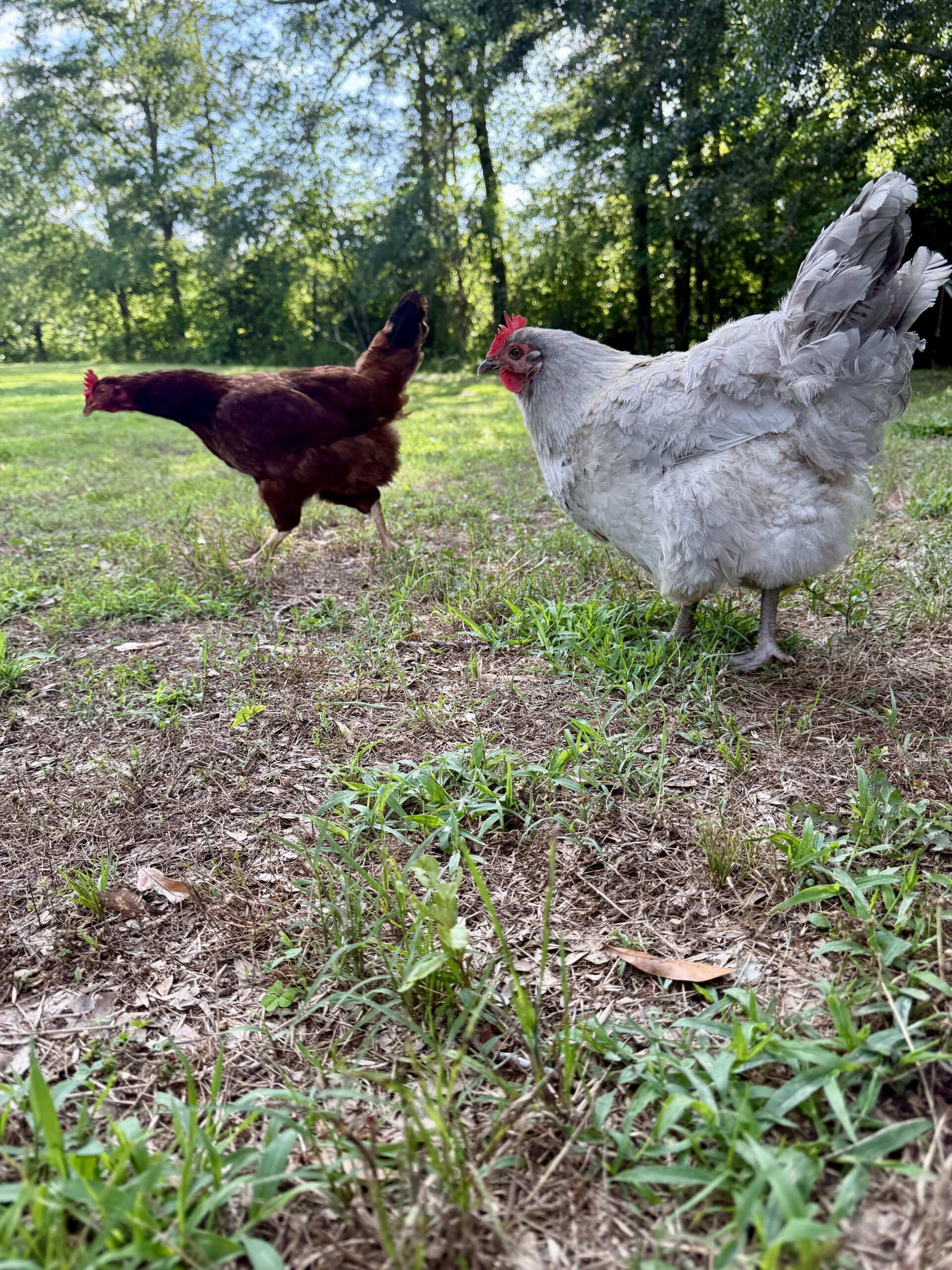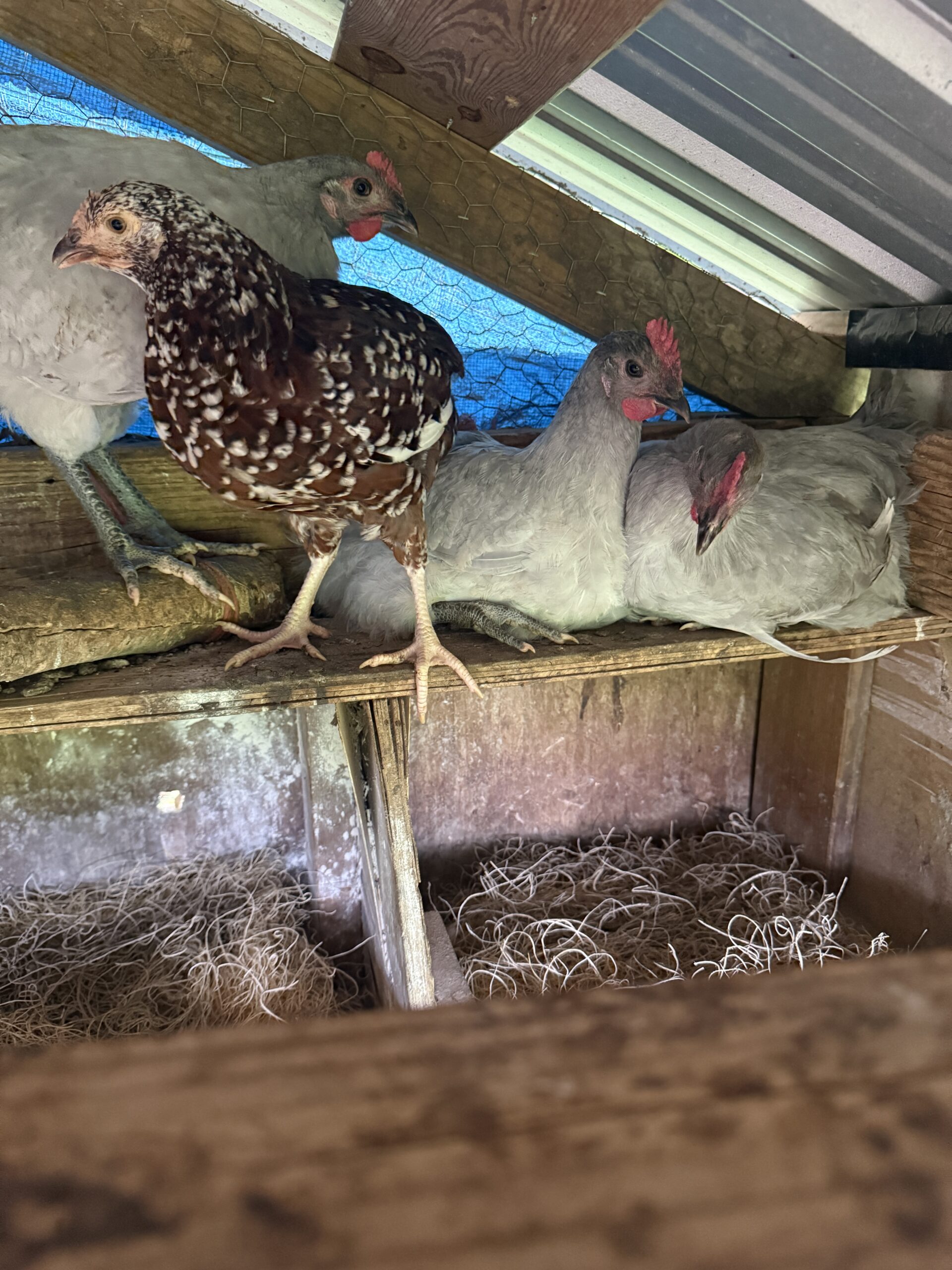I was in the midst of a luxurious dustbath this week when I received an email from a concerned reader, seeking guidance on how to introduce new chickens to a flock.
This, my dear, is a problem that all seasoned chicken servants come across at some point. You've fallen in love with our feathered fabulousness, and you want more! Only, natural darling, however, introducing new chickens to a flock requires… finesse.
If done incorrectly, integrating chicks (pullets or new roos) can cause fighting, stress, and/or illness. I've seen a serene coop turn into a feathered disaster zone after new additions — complete with side-eyes, stealthy pecks, and full-blown feather-pulling tantrums over the best nesting box.
But luckily, you have me to help!
Let me assure you that with a proper plan (and a touch of my feathered wisdom), you can integrate your new flock members smoothly.

Baby Henrietta with her first flockmates
Here's how to introduce chickens to a flock the right way!🐔🐥
Step 1. Mandatory Quarantine (Non-Negotiable!)
Quarantine new chickens. Period. This isn't a suggestion, it's a decree.
Chickens can harbor a number of diseases and parasites. From mites, lice, and worms, to the illness every chicken owner fears — Marek's Disease — your new arrivals could come bearing germs and parasites that could make your coop seriously ill. Moreover, chickens can appear perfectly fine on the outside during disease incubation periods.
For this reason, you should separate any new arrivals for a minimum of 2 weeks (preferably 4) before integrating them into your flock.
Make sure you have a separate, comfortable space away from the main coop (like a dog crate in the garage or a separate pen). It doesn't have to be fancy, just secure and clean!

Henrietta's newest flockmates
Step 2. The "See But Don't Touch" Phase
This is where the drama begins. We can see the newcomers. We can judge their posture, their comb size, their overall… aura. But we cannot peck them. It’s torture—however—it’s essential for successful social integration.
Chicken pecking order is a real thing, and sadly, there is only room for one at the top of the social hierarchy. While I am blessed to have top social status, not all ladies can be so lucky. Introducing chickens gradually can help minimize bullying within the flock (especially if you’re integrating chicks!).
Your new ladies (or gents) will need to remain separated but within eyesight of the main coop for a minimum of one week. A great way to do this is to use a wire fence or hardware cloth to divide the run or create a separate pen within the run.
You can encourage positive interactions by offering treats on both sides of the barrier to help forge positive associations (not everyone is as likable as me!) Scatter Small Pet Select Grub Bugs along the divide so they learn good things happen when the "others" are around.
.

The babies exploring their new home
Step 3: The Supervised Meet & Greet (The Main Event)
After you've carefully followed the steps above, it is now time for the main event! The chickens can now mingle and get to know each other (under strict supervision, of course.) There will be squabbles and posturing, of course, at first, but usually this will subside.
Choose a neutral territory if possible, or in the open run towards the end of the day (when chickens are naturally starting to wind down.)
Remember that some pecking is normal—this is how the pecking order is established. Explain the difference between the normal establishment of hierarchy and aggressive bullying that requires intervention.
Have a spray bottle of water or a broom at the ready — a quick spritz of water can help discourage mild pecking. You may need to use a broom to gently separate the chickens should a serious fight break out. However, you should allow them to work most of it out themselves.
Peck-no-more lotions and sprays can prevent repeat pecking — these products coat the feathers with a bitter flavor to reduce bullying.

The chicks meeting Henrietta for the first time
Step 4: Full Integration — The Nighttime Method
The final step: cohabitation. The key is to do it under the cover of darkness. Less experienced chickens (unlike myself) tend to be notoriously gullible at night.
- Night Ops: After a day of supervised mingling, place the new chickens on the roost with the existing flock late at night, after the original flock members have fallen asleep.
- The Morning After: In the morning, the flock will be confused but likely less territorial than if the new flockmates had walked in broad daylight.
- Multiple Feed/Water Stations: Scatter multiple stations to prevent resource guarding and give newcomers a chance to eat and drink.
Henrietta's Pro Tips for a Smooth Transition:
More is usually better: It's often easier to introduce two or three new birds than one single bird, who will become the sole target.
Size Matters: Try to introduce birds of similar size to avoid bullying. (Baby chicks and very young pullets typically take the brunt of bullying! Keep them separated until they can fend for themselves.)
Distractions can help: Provide piles of leafy greens, hanging treats, and new objects to investigate to distract from the new birds.
Be patient!: This process can take weeks or even months. Do not rush it.

Henrietta with her sister Gertrude
FAQ
Can you put baby chicks with grown hens?
Mixing baby chicks with older chickens can be a bad idea if they are not born into the flock. It’s best to wait until they are older and bigger so they don’t stick out and can defend themselves against the older flock members.
At what age should you introduce chicks to the flock?
Eight weeks or older is ideal. You should never introduce chicks younger than 6 weeks to an established flock.
Can you tell me how to stop pecking?
Some pecking is to be expected, but if it gets too out of hand, “peck no more products” can discourage pecking. If that fails, you may need to separate the offender into another pen and reintegrate after 2 weeks, when the pecking order is re-established.

One happy family!
Your Peaceful Flock Awaits
Now then, we've covered all the steps for how to introduce chickens to a flock. Follow these steps, dear, and you'll be well on your way to having a harmonious feathered family. Remember, a little squabble here and there is just us sorting out who gets the best nesting box. It's what we do. Now, go forth and integrate!"
Still have questions about how to introduce chickens to a flock the right way? Cluck on down to the comments below! Henrietta might just grace you with her wisdom.
Want to keep your whole flock happy and healthy from the start? Explore our premium feeds and treats designed for chickens at every stage of life.




